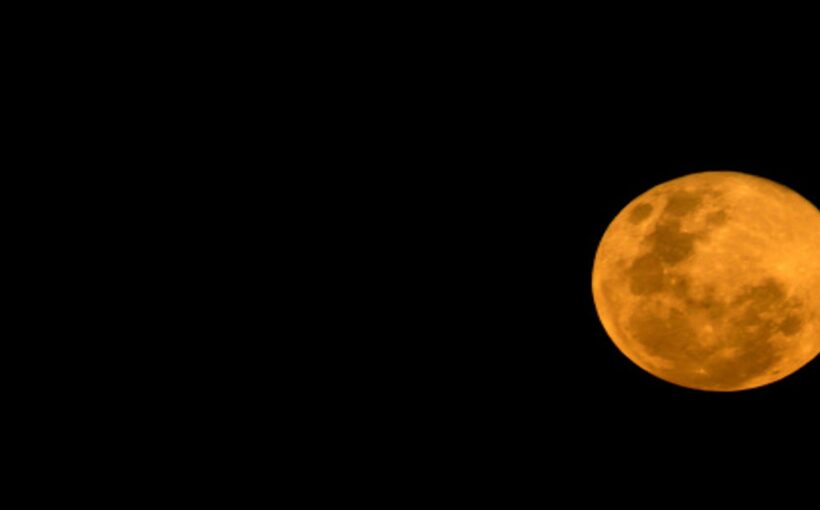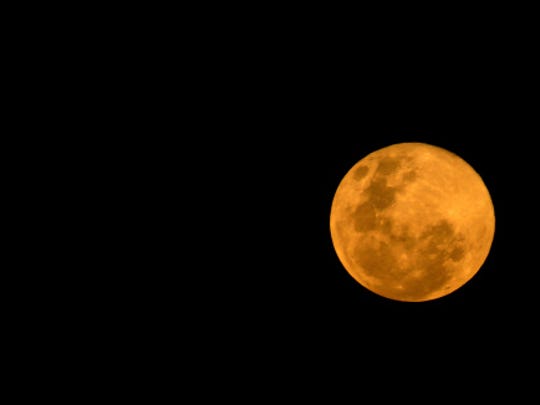After a pair of eclipses over the past few weeks, both lunar and solar, skywatchers will be in for another treat this week.
The full strawberry moon will grace the night sky this Thursday across the world.
Although the moon will officially be full before it pops above the horizon, it will look plenty big when it rises in the eastern sky Thursday evening, about the same time as the sun is setting in the western sky.
Alas, although it will be a supermoon, it won’t look like a strawberry, and it probably won’t be red, astronomers say, although it may have a golden color.
When is the strawberry supermoon 2021?
June’s full moon will reach peak illumination at 2:40 p.m. Eastern Daylight Time on Thursday but will not be visible until later that evening, when it drifts above the horizon, according to the Old Farmer’s Almanac.
June's full moon, known as the Strawberry Moon, rises above the Apollo Temple in ancient Corinth, on June 17, 2019. (Photo: VALERIE GACHE, AFP/Getty Images)
Why is it called the strawberry moon?
June’s full moon is called this name because it signaled to some Native American tribes that it was the time of year to gather ripening strawberries, the Almanac says..
The strawberry moon is the most colorful of the year because it takes a low, shallow path across the sky, said Bob Bonadurer, director of the Milwaukee Public Museum’s planetarium.
The low arc of the June full moon across the sky means moonlight must travel through more of the Earth’s atmosphere, which often gives it an orange or yellow tint.
The strawberry moon is also called hot moon because it rises right around the beginning of summer.
In Europe, alternative names include the honey moon, the mead moon or the rose moon.
What is a supermoon?
This Thursday’s full moon will also be the fourth and final supermoon of 2021, when the moon looks somewhat bigger and brighter than usual since it’s a bit closer to the Earth than usual.
The previous three supermoons were in March, April and May, according to NASA. “Different publications use slightly different thresholds for deciding when a full moon is close enough to the Earth to qualify as a supermoon,” NASA said.
“Because the orbit of the moon is not a perfect circle, the moon is sometimes closer to the Earth than at other times during its orbit,” according to NASA.
On average, supermoons appear about 7% bigger and about 15% brighter than a typical full moon.
The full strawberry moon is coming Thursday June 24, 2021. (Photo: Chris Litschka, Getty Images/iStockphoto)
Source: Read Full Article

